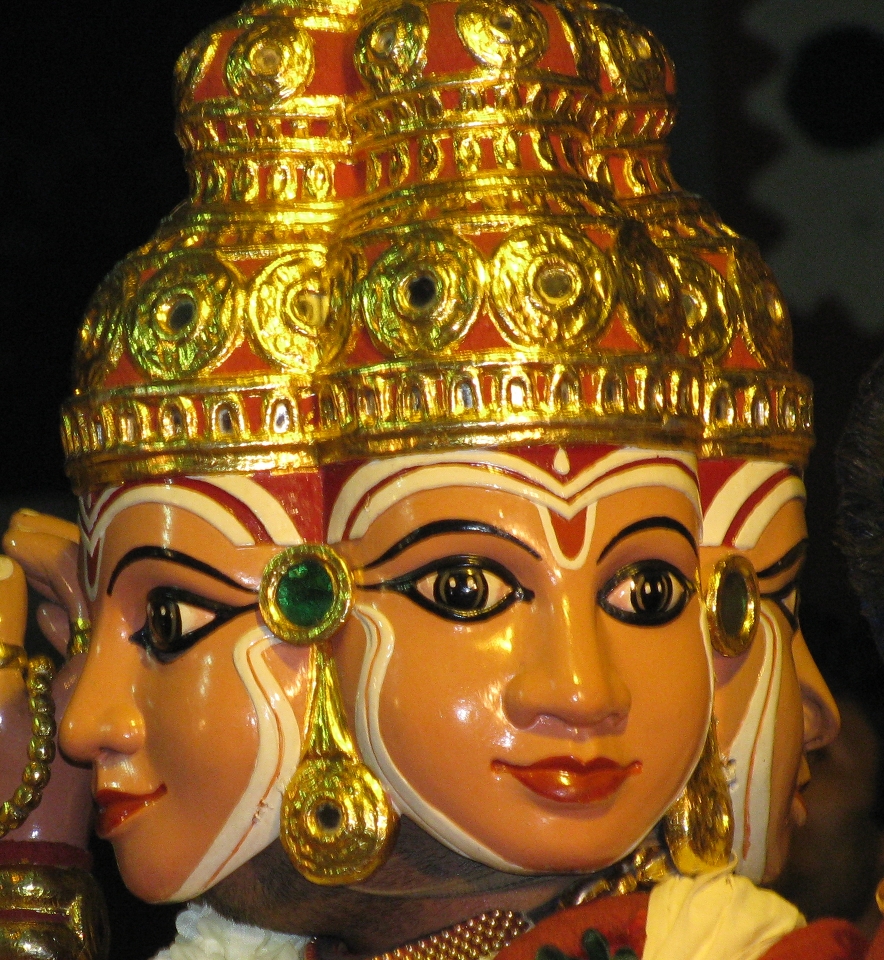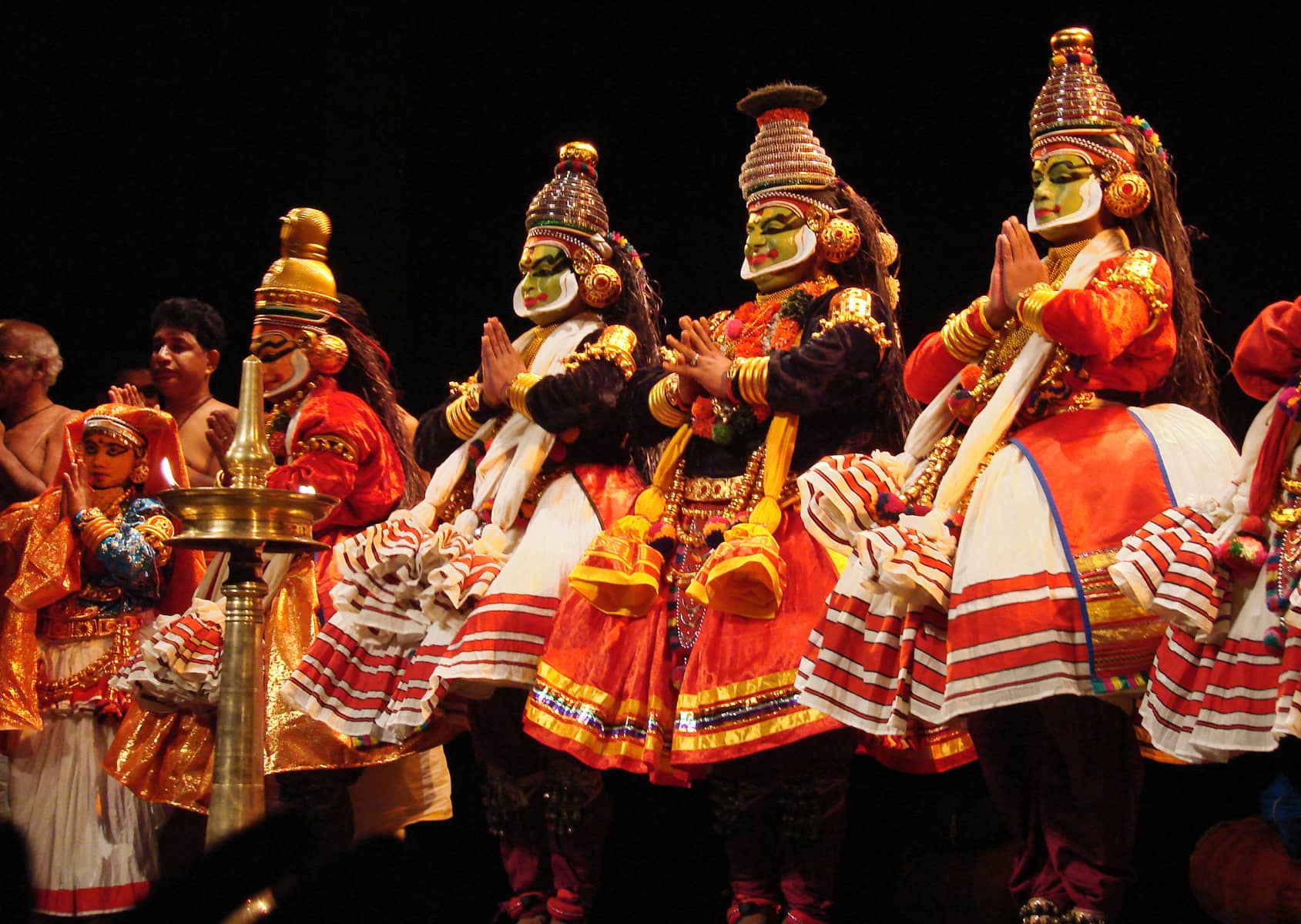Krishnanattam – An Art Form Unique To The Temples In Guruvayur
Among the many forms of arts in temple in Kerala, Krishnanattam is one of them developed by the King of Calicut Manadeva. Manadeva was also a great poet and scholar. Inspired from an eight-part poem by Geethagovindam by poet Jayadeva in Bengali language, Krishnanattam evolves from Krishnageethi.
Krishnanattam is a Sanskrit drama which details the life of Sri Krishna in 8 episodes. It combines music, retaining the traditional “Sopanam” style native to Kerala, and pantomime, with masks for demoniac characters and facial paint for the others. It is the only classical dance in Kerala which makes use of colourful masks derived from folk rituals like Tirayattam and Theyyam.
The eight-part poem consists of stories from the birth of Lord Krishna to his death and his ascent to heaven. The popularity of Krishnanattam declined with the decline of Zamoorin kingdom. However, this art form is active in Kala Nilayam of Guruvayur Sri Krishna Temple in Thrissur District. Since 1958, there’s a troupe of artists who are active at Kala Nilayam for Krishnanattam.

Masks of Brahma used during the dance
There are eight plays in Krishnanattam each having their purposes. These plays are:
- Avataram: For childbirth
- Kaliyamardanam: To offset the effect of a poison
- Rasakrida: To end the dispute between couples, for the well-being of unmarried girls
- Kamsavadham: For eliminating enemies
- Swayamvaram: For speeding up matrimony
- Banayudham: For the fulfillment of vows
- Vividhavadam: For eliminating poverty and to increase yield from farms
- Swargarohanam: For the well-being of a departed soul
History of Krishnanattam:
It is believed that Krishna appeared to Zamoorin of Calicut and bestowed Manadeva with a peacock feather.
It happened when Manadeva once told Vilwamangalam Swami – a saint who lived at Guruvayur that he wanted to see Lord Krishna. Swami Vilwamangalam replied that Krishna’s consent would be required. The next day, he told Manaveda that Krishna had agreed to appear in front of him and he could see Krishna early morning near the platform of Elanji tree.
The next day, Manadeva saw a small boy playing near the Elanji tree. Manadeva got excited and approached the child to embrace him. But the boy disappeared immediately saying that Vilwamangala hadn’t told him anything like that would happen. Nevertheless, Manadeva managed to get a peacock feather from the headgear of the child. So still today, peacock feathers are used in Krishnanattam to commemorate the incident.
Krishnanattam Performance:
This art is performed by male artists where they play the part of female characters as well. A boy aged around 6-7 years who plays the role of Krishna in the troupe. As for the musical instruments, Krishnanattam is just like Kathakali where Sudha Madalam, Chengila, Ilathaalam, Gong and Conch are used. Musicians sing the words by positioning them behind the actors. Only one play is staged per day. Avataram is played again on the ninth day of the play as Manadeva felt that it would not be right to end the play with the demise of Krishna.
Krishnanattam is performed on all days in Guruvayur except on Tuesday after the Sree Kovil closes. Each play lasts for 3-4 hours.
Book your stay at Sterling Guruvayur and witness the ancient art form of Krishnanattam unique to the Guruvayur temple.



